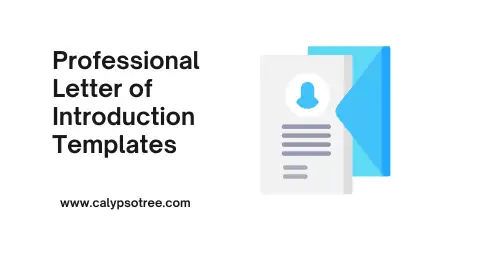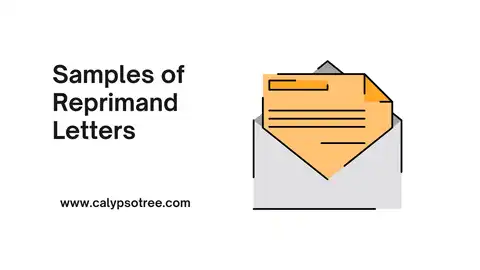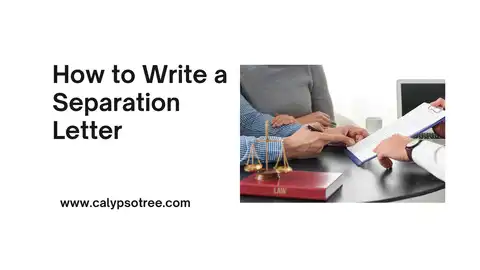Want to make a difference? Discover advocacy letters examples and a guide to write persuasive letters that get results.
Sometimes you see a need for change – a rule at school, a problem in your community, or even an unfair law. Advocacy letters examples are a powerful way to speak up and make a difference. This guide will teach you how to write an effective advocacy letter and provide examples to inspire you.
What’s an Advocacy Letter Anyway?
An advocacy letter is a focused and persuasive message to a decision-maker advocating for a specific change.
Think of it like a super-focused letter to someone important. This person might be a lawmaker, a school principal, or a company leader. The goal is to convince them to take action on an issue you care about.
Why are advocacy letters important?
Here’s why they’re important:
- Your Voice Counts: These letters go straight to the people in charge – the ones who can make decisions. It’s your chance to talk directly to them about what matters to you.
- The Power of Stories: Don’t just say “it’s bad,” explain why it affects you. Did something unfair happen at school? Share how it made you feel. Stories are way more convincing than just numbers.
- From Ideas to Action: Advocacy letters spark change. They can convince a politician to vote a certain way, change a school rule, or even make a company act better.
- Teamwork Makes the Dream Work: If lots of people write about the same problem, it shows leaders that everyone cares. That makes them take it seriously!
- Citizens in Action: Writing these letters is a way to be a good citizen. It’s how you can make a difference, instead of just complaining.
Who to Address in an Advocacy Letter
Who you address depends on what kind of change you want:
Lawmakers: These are the people who make the big rules and laws.
- Senators and Representatives: They work at the state or national level.
- Local Officials: City council members or your mayor deal with issues in your town.
School Leaders: If you want to change something at school, target:
- Principal: The big boss of your school.
- School Board Members: Elected officials who set school-wide policies.
Company Leaders: Want a business to change how it does things?
- CEO: The head honcho of the whole company.
- Customer Service: Sometimes starting here and working your way up helps.
How to Find the Right Contact:
- Government Websites: Search for your representatives and find their contact info.
- School Websites: Usually have a list of staff and the school board.
- Company Websites: “About Us” or “Contact Us” sections often list important people.
Essential Components of an Advocacy Letter
Here’s essential components of a strong advocacy letter:
Contact Information
Include your full name, mailing address, phone number, and email address. Position this information in the top right or top left corner of your letter.
Date
Include the date the letter is written.
Recipient’s
List the recipient’s full name, professional title, organization, and complete mailing address.
Salutation
Begin with “Dear [Recipient’s Title] [Recipient’s Last Name].” For example, “Dear Councilwoman Williams,”
Opening Paragraph
Craft a strong introduction to capture the reader’s attention. Consider these options:
- A compelling fact or statistic: Present a relevant and striking piece of data about the issue at hand.
- personal story: Illustrate the significance of the issue with a concise personal anecdote.
Body Paragraphs:
- Clearly articulate the issue: Succinctly describe the problem and explain its importance.
- supporting evidence: Strengthen your argument with facts, statistics, expert opinions, and specific examples.
- Address potential counter-arguments: Acknowledge opposing viewpoints and proactively counter them.
- Propose a clear solution: Offer a well-defined and actionable solution to the problem.
Call to Action
Explicitly state the desired action you want the recipient to take (e.g., vote, change a policy, provide support).
Closing
Conclude your letter with “Sincerely,” followed by your handwritten signature and typed name.
Best Formatting for Advocacy Letters
What’s the best format for an advocacy letter? While there’s no single “perfect” format, the best ones share these key elements:
Physical Letters
- Professionalism:
- Use high-quality white paper.
- Standard fonts (Times New Roman, Arial, size 12) for easy reading.
- 1-inch margins on all sides.
- Structure:
- Your Contact Info (top left or right corner)
- Date
- Recipient’s Contact Info (block format)
- Salutation
- Body Paragraphs (single-spaced, with a space between paragraphs)
- Closing
- Handwritten Signature
- Typed Name
Email Letters
- Strong Subject Line: Clear and attention-grabbing, related to the issue. Example: “Urgent Action Needed: Support Clean Water Act”
- Concise Body: While emails can be less formal, follow the same structure as a physical letter.
- Contact Info in Signature: Include your name, address, phone, and even a link to a relevant website if you have one.
Formatting Tips for Both
- Length: Aim for one page. Busy decision-makers need to grasp your message quickly.
- Paragraphs: Keep paragraphs short (2-3 sentences) for readability.
- Emphasis: Use bold or italics sparingly to highlight key points.
- Proofreading: Even a small typo can undermine your credibility. Have someone else proofread for you.
Additional Considerations
- Audience: Tailor your language and formality level to the recipient. A letter to a Senator might be more formal than one to a school principal.
- Official Templates: Some organizations provide pre-formatted advocacy letter templates, making things even easier.
Common Advocacy Letter Mistakes to Avoid
Here’s some common advocacy letter mistakes and how to avoid them:
- Lack of Focus: Trying to address too many issues in one letter dilutes your message. Choose one specific issue and stick to it.
- Too Long: Decision-makers are busy. Rambling letters or overly wordy explanations are likely to get skimmed or ignored.
- Not Enough Facts: Your passion is important, but back it up with credible evidence. Don’t just say “it’s a problem,” prove it with statistics, research, or real-world examples.
- Blaming: While it’s okay to be passionate, overly aggressive or accusatory language can alienate the reader. Focus on solutions, not just complaints.
- No Specific Ask: Don’t leave the reader guessing what you want. Clearly state the specific action you want them to take.
- Typos and Errors: These undermine your professionalism. Proofread meticulously, and ask someone else to review your letter before sending it.
- Generic Template: While templates are a starting point, personalize your letter as much as possible. Show that you’ve taken the time to learn about the issue and how it specifically connects to the recipient.
- Giving Up: Don’t be discouraged if you don’t get an immediate response. Send a polite follow-up email or try contacting their office directly.
Tips for Success
- Research: Know the background of the issue and what’s already been done to address it.
- Tailor Your Message: Adapt your argument and tone based on your target audience.
- Be Realistic: Ask for something achievable, not a complete overhaul the recipient can’t deliver.
- Emphasize the Positive: Highlight the benefits of taking the action you propose.
- Proofread! Then proofread again, and have someone else read it too.
Advocacy Letter Templates
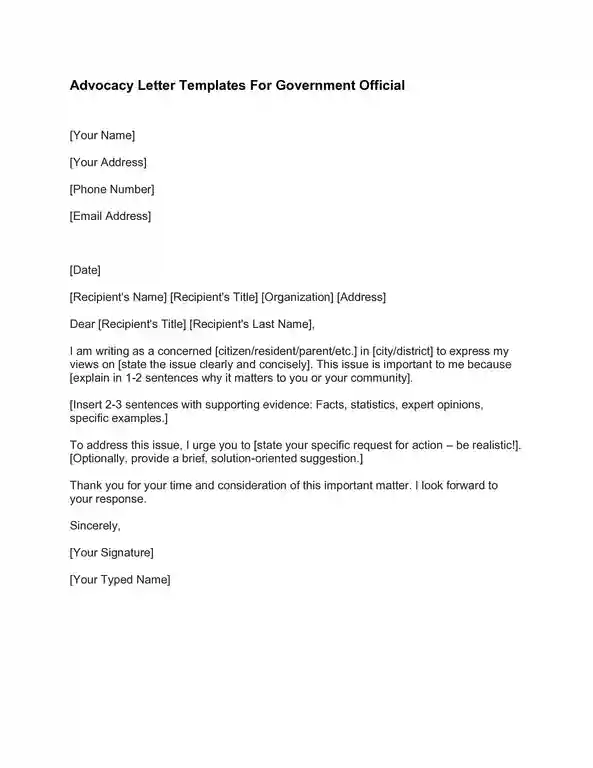
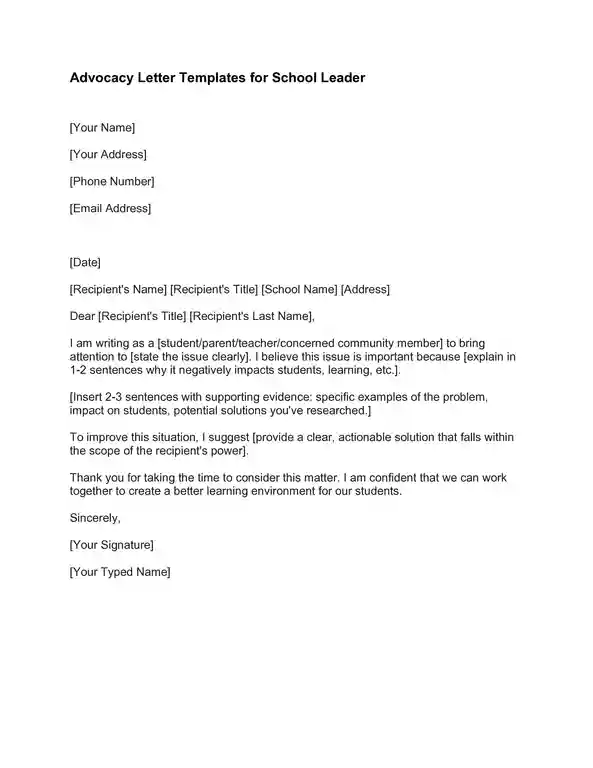
How to Write an Effective Opening Paragraph for Advocacy Letters Examples
Here’s a guide with along with different hook strategies:
The Goal: Capture Attention and Set the Stage
Your opening paragraph is prime real estate. You need to:
- Grab the reader’s attention immediately.
- Clearly introduce the issue at hand.
- Establish why this issue is important.
Effective Hook Strategies
- The Shocking Statistic:
- “Every year, over 500,000 animals are needlessly euthanized in U.S. shelters.”
- The Personal Story:
- “As a student, I witnessed firsthand how budget cuts led to overcrowded classrooms and outdated textbooks.”
- The Vivid Example:
- “Imagine starting your day without access to clean drinking water – this is a reality for many in our own community.”
- The Rhetorical Question:
- “How much longer can we ignore the growing threat of climate change to our state’s coastline?”
- The Call Back:
- “In your recent speech, you pledged to ‘leave no child behind.’ Sadly, many students with disabilities are still being excluded.” (Good if writing about something they’ve publicly said)
After the Hook
- Follow up with 1-2 sentences quickly explaining the specific issue and why it deserves urgent attention.
Tips
- Keep it short: Your opening paragraph should be no more than 3-4 sentences.
- Tailor it: Is your recipient likely moved by emotion or hard data? Choose your hook accordingly.
Advocacy Letters Examples
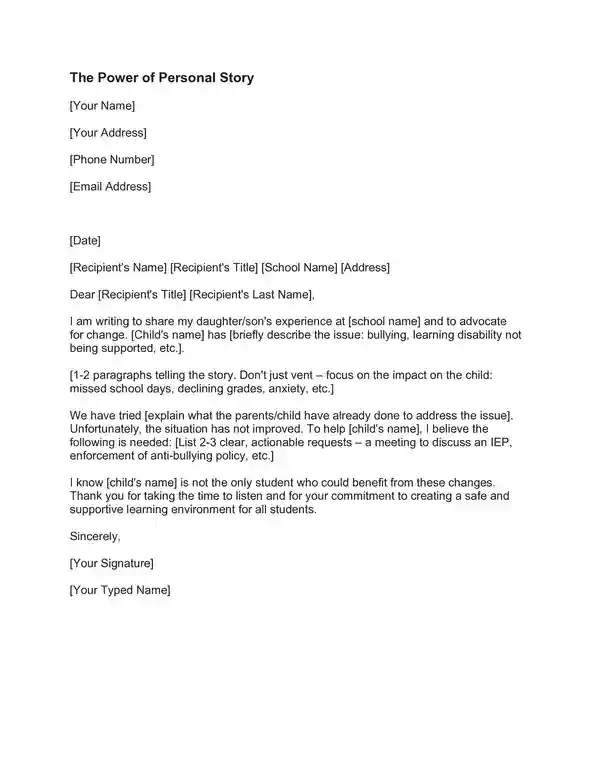
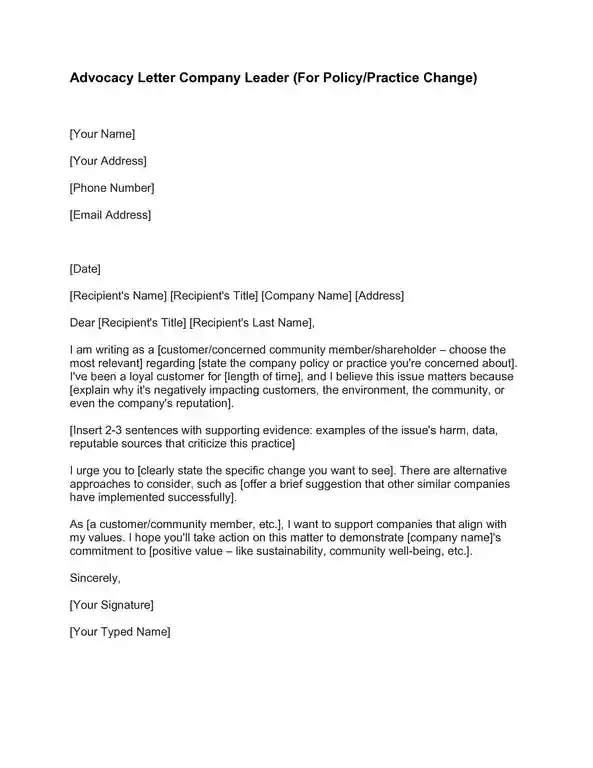
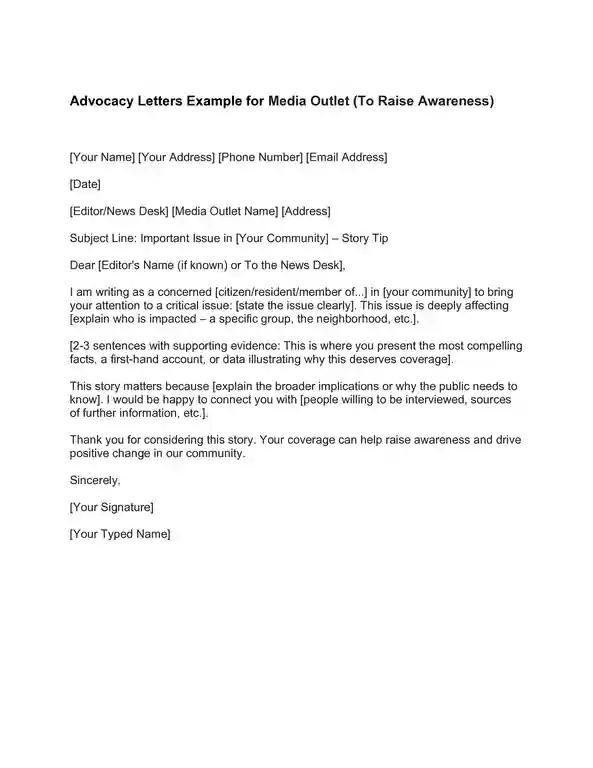
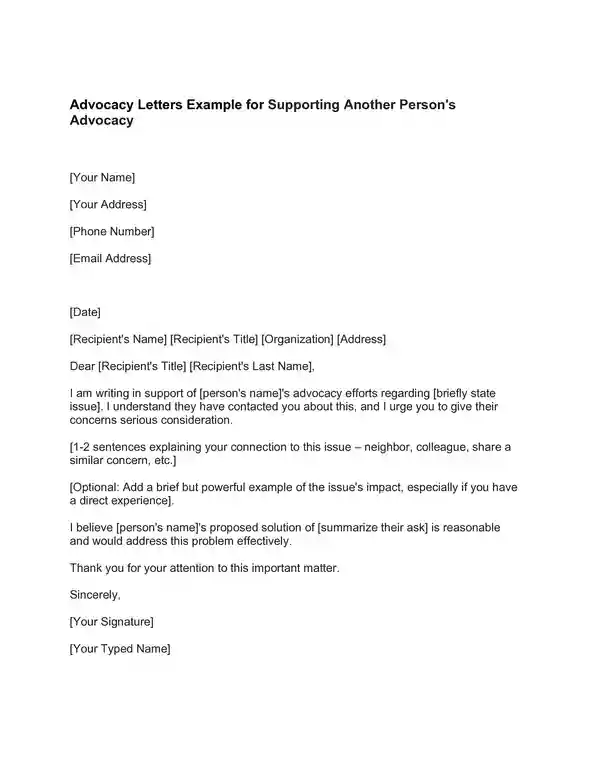
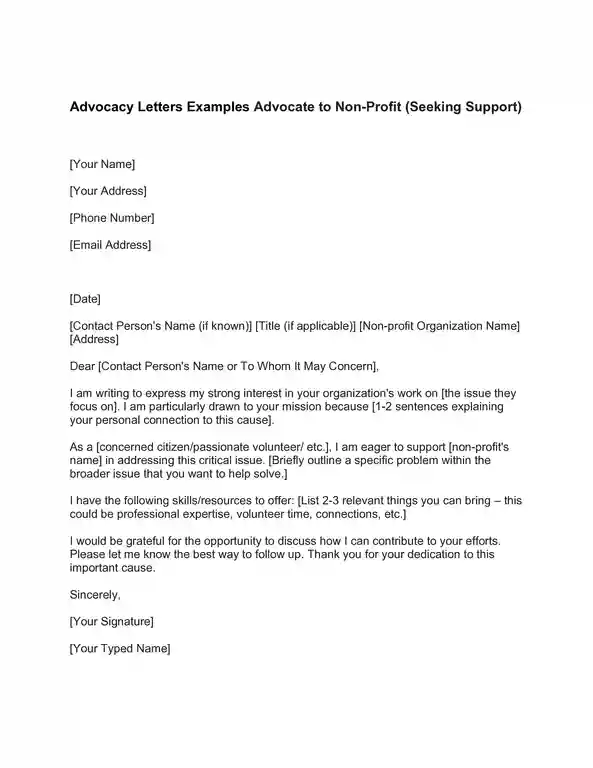
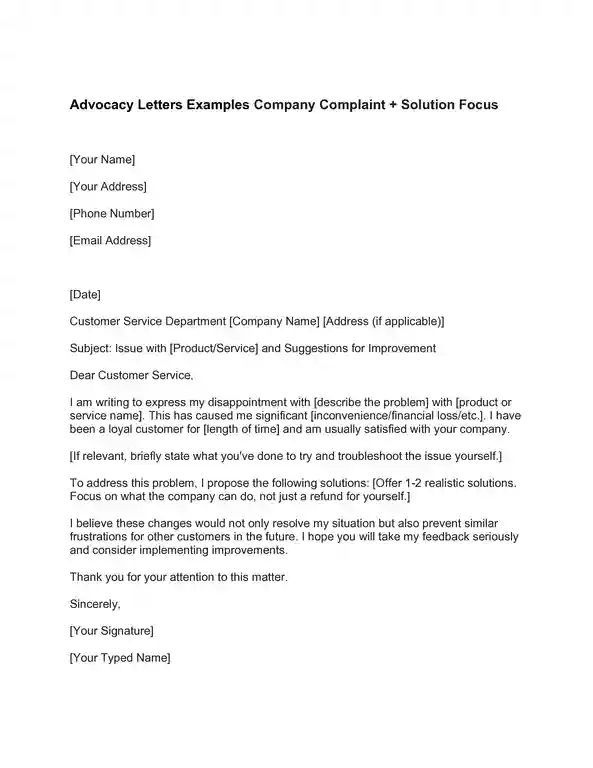
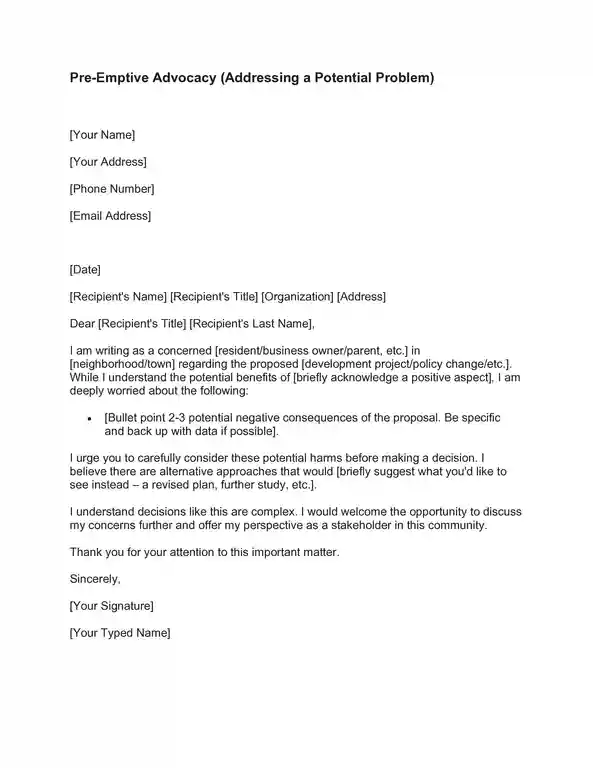
“Each day, 15 children in our state are diagnosed with preventable illnesses linked to factory pollution. As a parent, I’m outraged that this threat to our children’s health persists while regulations remain lax.”
Providing Persuasive Supporting Evidence
Here’s how to choose and present persuasive supporting evidence in your advocacy letter:
Types of Persuasive Evidence
Facts and Statistics:
Find reliable, recent data from reputable sources (.gov, .edu, well-established non-profits). Example: “According to the CDC, 30% of children in our district live in food-insecure households.”
Expert Opinions:
Quote researchers, relevant professionals (doctors, economists, etc.), or leaders in the field. Example: “Dr. Ramirez, a leading pediatrician, states that ‘access to healthy meals is crucial for a child’s development.'”
Specific Examples:
Illustrate the problem with real-world stories. This can be personal or examples from news reports. Example: “Last month, a student at our school fainted in class due to a lack of nutritious food.”
Comparison:
Highlight how your community or state compares unfavorably to others who have successfully addressed the issue. Example: “Neighboring states with similar demographics have seen 20% reductions in childhood hunger thanks to their school lunch programs.”
Tips for Presenting Evidence Effectively
- Credibility is Key: Cite your sources! Briefly mention the organization or study where the information comes from.
- Balance: Use a mix of data and stories. Too much data feels cold, too many stories lack authority.
- Concise and Clear: Explain complex statistics in simple terms.
- Relevance: Directly tie your evidence to your proposed solution. Don’t just throw random facts around.
Where to Find Evidence
- Government websites: [data.gov], agency websites (Department of Education, etc.)
- University Research: Check websites of universities known for studying your issue.
- Non-profit Organizations: Many organizations focused on specific issues collect great data.
- Reputable News Sources: Look for in-depth reports, not just headlines.
Extra Tip: A well-placed graphic (chart or infographic) can make complicated statistics easier to grasp quickly.
Conclusion
When people use advocacy letters together, they can influence big changes like new laws or better policies. Don’t be afraid to use your voice – you might be surprised how much impact you can have!
“Advocacy letters are a powerful tool for citizens to drive change. With this guide, you’ll write letters that not only demand attention but also inspire action. Let’s make a difference together!”
FAQs
How is it different from a regular letter or email?
It differs from regular correspondence by having a clear goal and call to action.
Can anyone write an advocacy letter?
Yes! Anyone can write an advocacy letter. Your voice as a citizen, student, consumer, or concerned community member matters.
What kinds of issues can I address with an advocacy letter?
You can address a wide range of issues, big and small: laws you want changed, school policies, problems in your neighborhood, company practices you disagree with – if it’s something you want to see changed, an advocacy letter can help.
Where do I find the contact information for the right decision-maker?
Government websites (local, state, national), school websites, and company websites (“About Us” or “Contact” sections) are great places to start. Your guide should have a section on this!
How can I make my opening paragraph grab attention?
Start with a shocking statistic, a personal story, a vivid example, or even a rhetorical question related to your issue. Your guide should include more detailed tips and examples.
What if I don’t have a lot of statistics or facts to support my cause?
Personal stories and real-world examples are powerful! Explain how the issue affects you or someone you know. You can also look for reputable sources online (like .gov sites or well-established non-profits).
Should I keep my advocacy letter short, or can I go into more detail?
Aim for one page. Busy people need to grasp your message quickly. If you have a lot of supporting evidence, consider including the most important points in the letter and providing a link to a website or document with additional information.
What if I don’t get a response to my letter? Should I follow up?
Absolutely! A polite follow-up email or phone call to their office shows you’re serious. Don’t get discouraged by a lack of immediate response.

The content creator team at calipsotree.com is dedicated to making topics accessible to everyone, with over 9 years of experience in writing and breaking down complex concepts into easy-to-understand articles that answer readers’ financial questions.






